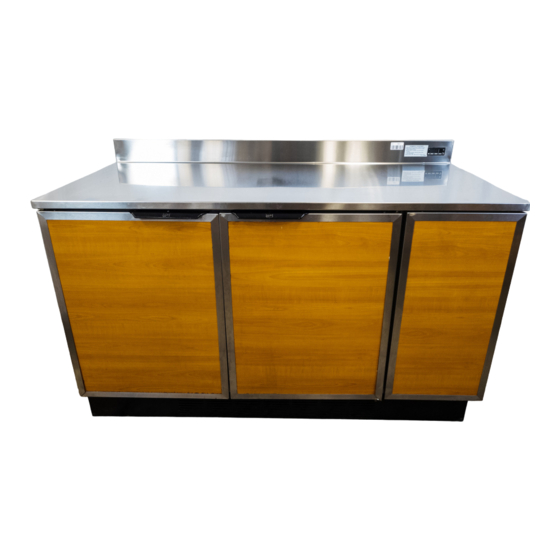Duke RBC 60 Manual de instalação e operação - Página 6
Procurar online ou descarregar pdf Manual de instalação e operação para Frigorífico Duke RBC 60. Duke RBC 60 8 páginas. 48/60 inch refrigerated back counter digital
Também para Duke RBC 60: Manual de serviço (16 páginas)

Installation and Operation of: Refrigerated Back Counter
OPERATION
OPERATION – Location of Controls
The refrigeration control/temperature setting adjustment is located on the back splash. The energy saving mode
switch (if equipped) is located inside the right front access panel. (See figure 3 & 4.) Remove front panel and access
plate.
These are the only user adjustable components on the unit.
OPERATION – Operating Procedure
Press and hold the (i) button to display setpoint. Keep (i) button pressed and use the up/down arrows to adjust set-
point. When the (i) button is released, the new setpoint is stored. To exit from the setup, press the power button or
wait 30 seconds. Display will display "dEF" while unit is in defrost mode. Check the cooling specifications required for
the products/goods to be stored.
Figure. 4
Refrigeration control / Temperature display
Use a simple thermometer to set to a specific
temperature. Allow time for temperature changes before
Figure. 3
making a final temperature check.
MAINTENANCE
MAINTENANCE – Stainless Steel Care & Cleaning
To prevent discoloration or rust on stainless steel several important steps need to be taken. Stainless steel contains
70-80% iron which will rust. It also contains 12-30% chromium which forms an invisible passive film over the steels
surface which acts as a shield against corrosion. As long as the protective layer is intact, the metal will not corrode.
If the film is broken or contaminated, outside elements can begin to breakdown the steel and begin to form rust or
discoloration.
Proper cleaning of stainless steel requires soft cloths or plastic scouring pads.
CAUTION: Never use steel pads, wire brushes or scrapers.
Cleaning solutions need to be alkaline based or non-chloride cleaners. Any cleaner containing chlorides will damage
the protective film of the stainless steel. Chlorides are also commonly found in hard water, salts and household and
industrial cleaners. If cleaners containing chlorides are used, be sure to rinse repeatedly and dry thoroughly upon
completion.
6
